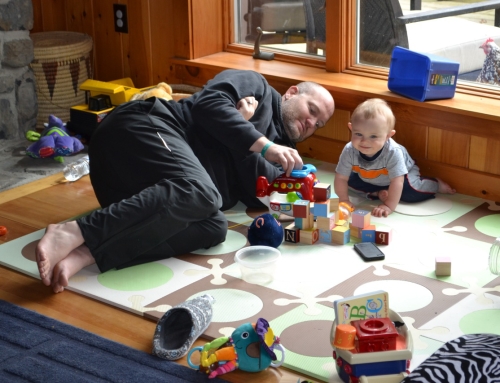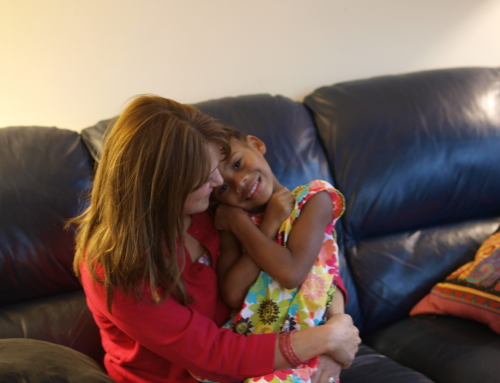The relationship that you form with your child, hopefully a secure attachment, influences your child’s brain for the better. You are actually shaping your child’s brain as you attach. As you are caring for your child, certain areas of your brain will be active. These are called neural firing patterns. That is, “neural,” referring to brain cells, and “firing,” referring to the activity of these cells. The neurons, which have electrical signals, are “firing” in particular patterns.
Babies and children have brains that are shaped by their parents’ brain patterns. When you are connecting with your baby or child, or if you are playing with or calming yourself or child, your brain will show activity in those brain areas that have to do with emotions and relationship. Amazingly, that will cause the corresponding areas of your baby or child’s brain to become active. Your child’s brain patterns are also called “neural firing patterns.” The neural firing patterns of parents are mimicked or echoed by infants and small children. Over time, your baby or child will lay down wiring, causing their brain patterns to resemble yours. Through your relationship, you will shape their brains.
Ideally, your brain patterns of soothing, playfulness, or interest in your baby or child will be reflected by similar activity in the same regions of your child’s brain. Since infant’s and children’s brains are just developing, these patterns become the early architecture of their brains. Your children literally become shaped by your brain patterns–whether or not there is a biological relationship. In secure attachments children’s brains reflect their parents’ abilities of calming, compassion, and empathy, as well as stress reduction. They become “wired” to be social, caring, playful, and easier to calm. Over time these tend to become their personality traits. These are all brain-based developments in our children that naturally emerge just by our being a caring, although imperfect, parents.
Secure attachments seem to emerge naturally when adults have had healthy models and when children have been treated well from birth. But secure attachments may need jump-started when you or your child are forming a relationship after a rocky start. Some of the basics to remember in forming a secure attachment with your child are being:
Kind,
Capable (good basic physical care),
Sensitive,
Stable,
Imperfect–but willing to try again.
When we do the above, children feel:
Valued,
Safe,
Worth your attention and care,
Deserving of love and care when they are challenging,
Aware that when you have bad moments, you will try to remedy the moment and will rebound.
Children with secure attachments seem to have a sturdy quality to them. The children approach relationships with brain patterns of being confident and caring. They tend to be good to recognizing the emotions of others—and of themselves. They tend to calm themselves more easily. They tend to be more confident in turning to others for help when needed. They are also more curious and ready to explore the world—since they know that they have you to help them. They feel safe enough to venture out.
The term “security” in attachment also refers to the belief that people can count on each other to return after an absence. When you and your child need to be separated, you know that you will miss each other when you have to be apart. But, children learn that you return. And, that you will be sensitive to their needs–you will not be gone too long for them to tolerate at their age.
As your children get older, they learn that when you let each other down, you will model how to work on apologizing, and try to work out the problem. The connection between the two of you will teach your children how to treat themselves and other people with respect and value. They will learn from you how to connect meaningfully to others—including the next generation.





